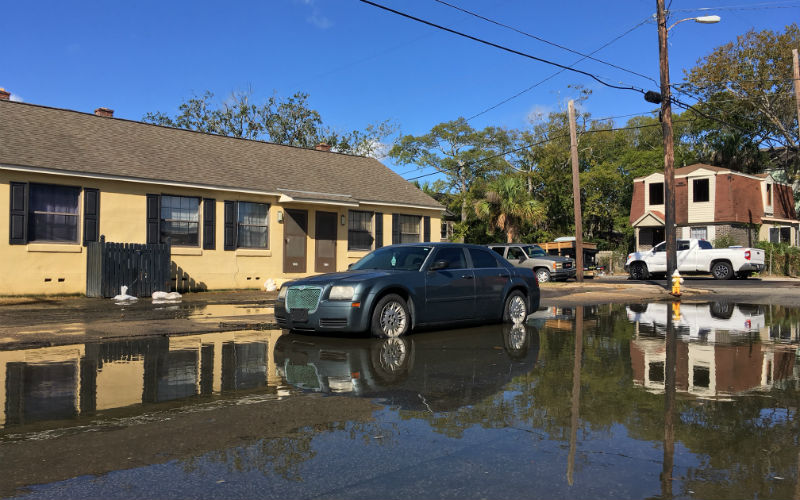By Fred Palm, special to Charleston Currents | The driver of future flooding or its prevention lies in Charleston County’s comprehensive land use and the county’s zoning code that is now undergoing review.
Charleston County’s Comprehensive Plan does NOT have water height, e.g., FLOODING, in the plan. Imagine doing a county plan without having looked at an inundation map, let alone defining a land use plan that will accommodate future floods. To continue to muddle through is other than the top-tier governance that we need now.
The next meeting of the countywide planning commission is October 9, 2017, 2 p.m. There, Charleston County can take immediate action in addressing flooding by crafting the comprehensive plan land use and zoning code to address the water issues. These land use policies and programs set the foundation for our future. If this plan is actually comprehensive we can avoid the need to fix the errors created by an ill-conceived, inadequate plan. Clearly, too much water is in our future and the elected and appointed officials need to address the condition now; before that happens.
We need to think where homes and commercial structures should be built, not where developers want to build to maximize profit or make a killing and run. We cannot continue to pay to fix the flooding problems or buy out flooded homes at all costs because we gave permission through government’s policies. Many of our communities are now stuck in mud because we have not told the market where to build. Let the buyer beware should not be the prevailing strategy.
Flood maps look to the past and are outdated. How many times recently have you hear of 100-, 500- or 1,000-year floodplain? An incorrect interpretation is that the event is so rare as to render it inconsequential. The correct interpretation is that the long-standing records are rapidly being eclipsed. We also need to look to our future and where floods will occur.
The comprehensive plan and zoning code needs to be redirected to the future that by all accounts will have more water though how severe is in dispute.
- Where do we put schools and other capital investments?
- How about putting parking garages and parks in lower-lying areas?
- Where will we need to raise streets and highways?
- If the I-526 extension is authorized, should it be redesigned to provide a solid berm to reduce the impact of Stono River floods?
- Are we better off not building Interstate highways but spending the money to elevate highways? (Portions of the current I-526 will be under water.)
- What are the vulnerabilities to flooding throughout the county and not just in the City of Charleston?
- How can we utilize the surrounding marshes to provide protection and water absorption?
- How many more questions do we need to ask of our elected and appointed officials to get this right?
We need to work with the private and military sectors as they have assets, employees and their own plans in the flooding game. Yet the employing sector is apparently sitting still on this question and needs to get much more involved. Where is the participation of Joint Base Charleston, Boeing, Volvo, MUSC, Roper, The College of Charleston and other larger employers?
Just what will we do and how? For openers, we can start today with effective actions first directed and how the land is to be developed and used as water does not respect jurisdictional boundaries. We need a county, intercounty [Berkeley, Charleston, Dorchester] and S.C. coastline approach from our state government. The Charleston County Council needs to step up and take the lead, marshal the forces and write the best comprehensive plan and zoning code possible.
What is at stake is large and can be addressed for the common good. We need to be bold and imaginative now.
After that, we can begin to elect state and local leaders with vision and courage to address what is obvious, throwing off the myopic yoke of special interests and the buddy system that produces the crop of leaders.
- Have a comment? Send to: editor@charlestoncurrents.com




 We Can Do Better, South Carolina!
We Can Do Better, South Carolina!

























One Comment